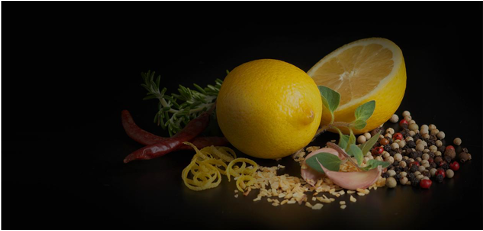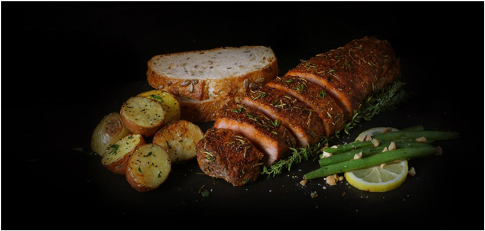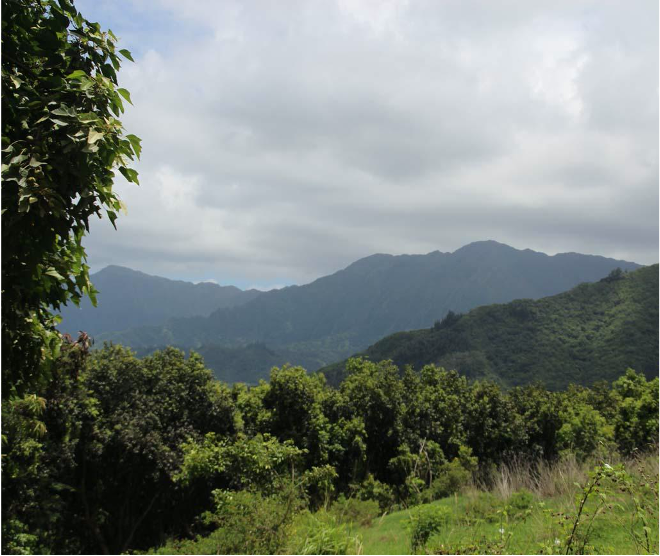Data-Driven Visual Strategy
Measuring the Restorative Impact of Nature
Context
During my first role at GE Appliances, I had the opportunity to lead user-focused projects, manage cross-functional communication, and advocate for the value of UX within a traditionally engineering-driven organization. As I wrapped up my time at GE, I initiated a self-directed “passion project” exploring cognitive restoration—an area I had previously researched during my graduate studies at Texas Tech University.
This project aimed to connect evidence-based Human Factors research with real-world product marketing needs. Specifically, I wanted to examine whether incorporating greenery and natural elements into GE’s product imagery could enhance users’ perceptions of restoration and reduce visual stress in appliance-related marketing content.
Based on this framing, I developed two guiding research questions:
How do users currently perceive GE product imagery?
How might we improve this imagery to increase perceived restoration and reduce visual stress?
Tools: Qualtrics
Method: Survey, Secondary Research, Literature Review
Timeframe: 1 month
A 2016 survey by the U.S. Bureau of Labor Statistics found that people spend nearly two hours per day on household chores, with food preparation and laundry among the most common—both areas where GE Appliances offers core products.
There is an opportunity for these appliances and their associated imagery to support not only task completion but also users’ overall happiness and well-being (aligned with GE’s brand promise). This could meaningfully improve the experience of completing these tasks, especially for individuals doing them after a long day of work. One relevant aspect of happiness and well-being well-being is cognitive restoration.
Secondary Research

One relevant aspect of happiness and well-being is:
Cognitive Restoration
Cognitive restoration refers to the idea that certain environments—particularly natural environments—can replenish an individual’s cognitive resources (ART; Kaplan, 1995). Exposure to nature has been associated with elevated positive emotions (Hartig, Evans, Jammer, David, & Garling, 2003; Ulrich, 1979) and reductions in both physiological and psychological stress (Ulrich, 1979; Ulrich et al., 1991).
There is extensive evidence supporting the restorative effects of nature:
Students demonstrated higher attentional functioning when their dormitory windows overlooked natural settings (Tennessen & Cimprich, 1995).
Performance on attention-based tests improved after walking through natural environments (Hartig, Evans, Jamner, Davis, & Garling, 2003; Berman, Jonides, & Kaplan, 2008).
Notably, restorative benefits are not limited to physically being in nature—simply viewing digital images of natural scenes has been shown to improve directed attention (Berto, 2005; Craig, Klein, Menon, & Rinaldo, 2015).
Given this body of evidence, I sought to explore whether incorporating natural imagery—such as greenery—into GE’s product visuals could enhance perceived restoration compared to the food-based imagery currently used on many GE products.
To evaluate whether imagery containing greenery produced higher perceived restoration than GE’s existing food-focused imagery, I designed a quantitative study grounded in validated Human Factors and environmental psychology measures.
Research Method
1. Short-Perceived Restoration Scale (Short-PRS)
The Short-PRS (Berto, 2005) was used to measure participants’ perceived cognitive restoration after viewing each image. This scale is grounded in Attention Restoration Theory (ART; Kaplan, 1995) and has been repeatedly validated in prior research studying natural environments, digital nature scenes, and environmental design.
Chosen because it is highly sensitive to small differences in restorative qualities
Appropriate for digital imagery, not just real-world environments
Allows comparison across large sets of images
2. GE Appliances Segmentation Questionnaire
Participants also completed GE’s internal segmentation questionnaire, which categorized them into existing consumer segments (e.g., Value seekers, Design-focused buyers, Innovation adopters, etc.).
This allowed the analysis to determine:
Whether certain segments experience higher restoration from greenery than others
Whether current imagery is aligned with the needs and motivations of GE’s target consumers
Integrating segmentation data meant the study could deliver actionable insights for GE’s marketing and product teams—not just theoretical findings.
Stimuli
Photos used in the study are shown below. The study used photos that were currently used on GE products (Row 1 & 2) and photos of nature (Row 3).












Key Insight: The study revealed a clear and consistent finding: imagery containing natural elements produced significantly higher feelings of cognitive restoration across all GE consumer segments. While every segment responded positively to greenery, one segment exhibited a notably stronger restorative effect—indicating a meaningful opportunity to tailor imagery more strategically.
Application
1. Integrate Nature-Inspired Imagery Across Product Lines
Because all consumer segments experienced enhanced restoration, incorporating natural elements—such as greenery, plants, and soft natural tones—into future product imagery can strengthen user experience and emotional resonance across the brand.
2. Tailor Imagery for High-Opportunity Segments
The segment that showed the strongest restorative response represents a strategic opportunity for:
Personalized digital content
Segment-specific marketing campaigns
Visually differentiated product pages or promotional materials
These users are especially responsive to natural imagery and less positively influenced by food-focused visuals, suggesting a clear direction for targeted creative strategy.
3. Support GE’s Brand Promise Around Well-Being
The results reinforce GE’s broader brand positioning around happiness, well-being, and improving life at home. Introducing nature-inspired visuals aligns the product experience with the brand’s emotional and psychological goals—creating a more holistic and human-centered customer journey.
NEW! Indoor Garden Growing Center 🌿
Recently, a new product by GE has been announced that incorporates the principles of cognitive restoration that provides a delightful experience for our consumers.


